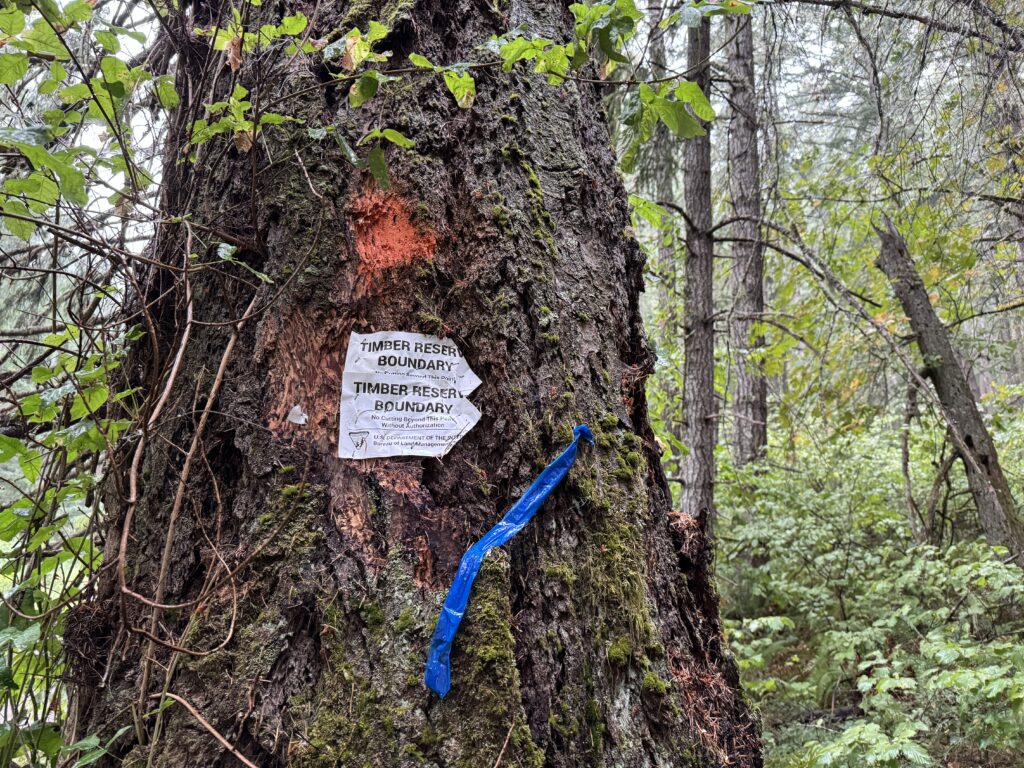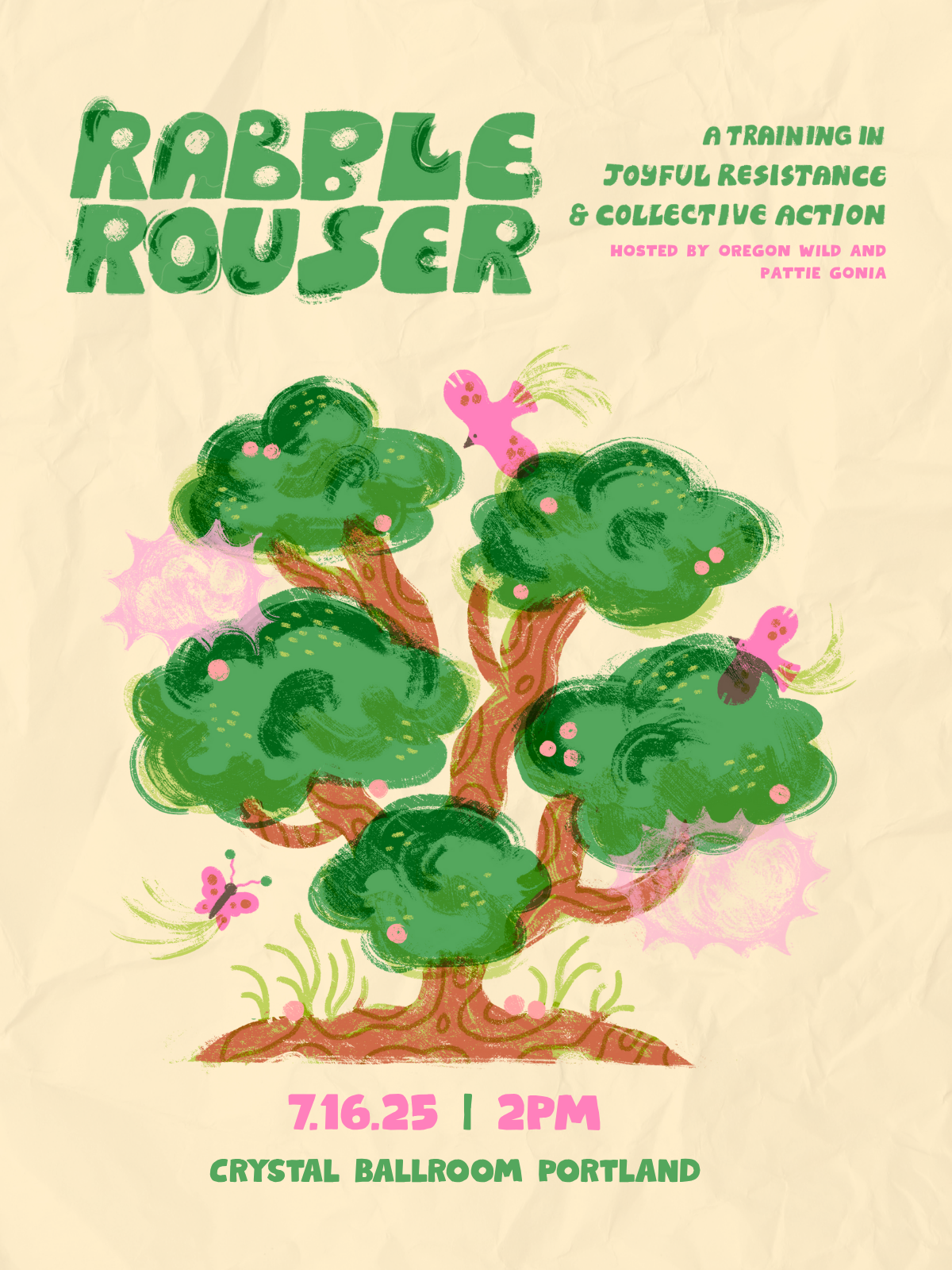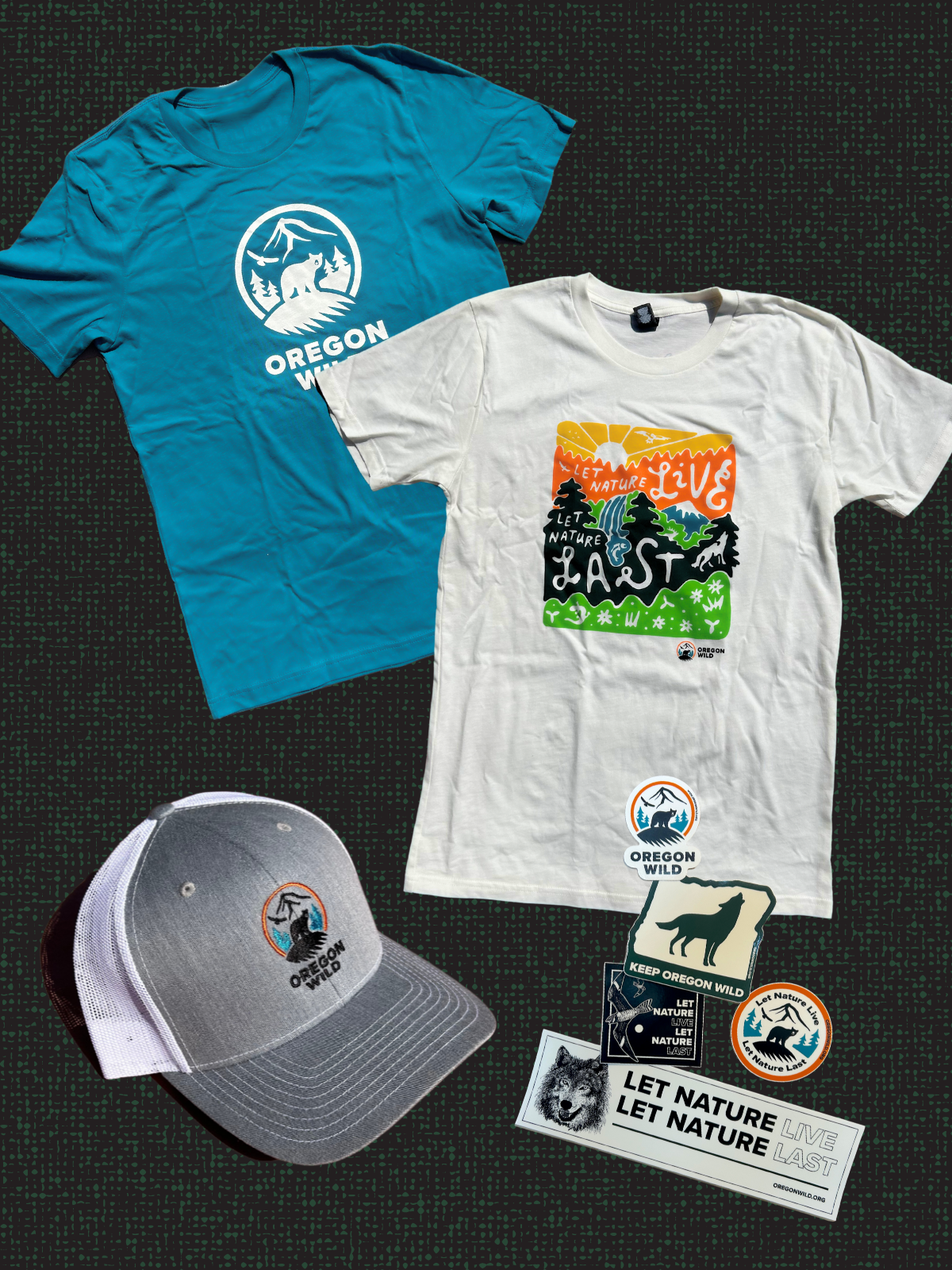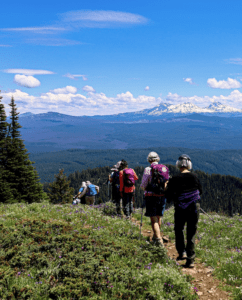Our national public lands are managed on our behalf by federal agencies that are required to make informed decisions and involve the public in the process. The foundational environmental law for this is NEPA, the National Environmental Policy Act. It requires federal land management agencies to complete an analysis of the significant impacts of logging (or other proposed activities) and associated activities and weigh and consider alternatives to proposed plans. The public has the opportunity to comment on documents and participate in agency decision-making.
When an agency like the Forest Service or Bureau of Land Management (BLM) decides to “do something” to manage public lands, there is a specific set of steps it must take under NEPA and its internal guidelines to involve the public and analyze the impacts of what they are thinking about doing. Projects with potentially significant impacts are supposed to be analyzed with a more robust process – either an Environmental Assessment (EA) or Environmental Impact Statement (EIS). Projects with nominal impacts that fall within certain parameters (like number of acres or miles of new road building) may be analyzed with a very rudimentary process using a “Categorical Exclusion” (CE). Unfortunately, recent federal administrations and Congress have approved and directed the Forest Service and BLM to use more and more CEs – even for large logging projects. This is one way that the Trump administration is trying to dramatically increase logging on public lands, by taking shortcuts with environmental analysis, consultation with wildlife experts, consultation with Tribes, and public involvement.
This resource helps you know where to get information about these projects and how to weigh in.
How to find out about forest management projects
Oregon Wild staff monitor and track proposed logging and other projects across the state. Some projects (like those proposing to log mature and old-growth forests or in sensitive wild areas) rise to the top of our priorities and we send action alerts to activate the public to weigh in. Behind the scenes, we’re tracking and commenting on plenty more. If you’d like to find out about projects in a particular area, here’s how:
- National Forests:
- Information on individual projects can be found on individual National Forest websites. Go to this site, then use the “Find a Forest” area to locate the National Forest of your interest.
- Updates on projects and new planning efforts can be found in the Schedule of Proposed Actions (SOPAs) on these websites, updated quarterly.
- Each National Forest website has a “Projects” page (found under “Topics” in the top menu). Here is the Deschutes National Forest projects page as an example.
- On these pages, you can find a list of current projects. If you click on one you’ll find analysis documents, maps, and more. Click on “Get Connected” to find how to comment on the project during open comment periods.
- On the National Forest projects page you can also sign up for notices for all projects (under “Email notifications”) and the SOPA for the Forest.
- Bureau of Land Management (BLM) forests:
- Information on individual projects can be found on the BLM’s E-planning site. Use the “Advanced Search” option to type in the name of a project, or the other boxes to designate a specific office of the BLM and time frame for a project you’re interested in.
- Timber sale information for western Oregon, such as auction dates, price, volume, and unit maps, can be found on this website.
Contact Oregon Wild’s Senior Conservation & Restoration Coordinator Doug Heiken to find out more about projects we are tracking and commenting on.
How to comment on public lands management projects
Submitting comments on proposed projects is a great way to make your voice heard, show that the public is paying attention, and get to know how the process really works. You don’t have to be an expert, use scientific citations, or be a great writer to submit a comment. Just share your personal perspective on why you care about the area and what your concerns are about the project.
The best place to weigh in is during the “scoping” period, when a project is first proposed and before a decision is made. At this stage, you can bring up all your concerns, opinions, and suggestions for how/if you think the project should develop moving forward. You can also submit a comment during open comment periods on a Draft Environmental Analysis (EA) or Draft Environmental Impact Statement (EIS).
There are further steps after a proposal is near finalized or when a decision is made. These steps are more specialized and onerous, so Oregon Wild engages in these objections, appeals, and litigation through its knowledgeable staff on behalf of our supporters
What to include in your comment
Sample outline for your comment letter:
- Who you are
- Why you care about the forest
- Pick some talking points that appeal to you
- Tell the Forest Service what you want them to do
Comment letters should always be clear as to what project you are addressing, and focus on specific elements of the proposal and the environmental analysis if at all possible – not just general issues. This way, the agency is required to respond whereas they often blow off general issues and can say they are outside the scope of the specific project. For example, saying that you want them to drop a specific proposed harvest unit(s) because logging there would harm wildlife/recreation/water/etc is better than just saying you don’t like the project and want them to stop planning it.
Here are some questions to stimulate ideas for comments:
- Did they follow the rules for the agency and the rules for the land area they are proposing to log? Are these rules outdated?
- Did they consider the best science? Is there new information about climate change, wildlife, etc that they should be considering?
- Did they fail to consider something important? For example, does the project impact a roadless area, or a rare species’ habitat but they failed to mention that?
- Did they consider all reasonable alternatives? For example, could the project be done without building new roads?
- Are the effects of the proposal potentially significant? If so, should they be doing a higher level analysis?
- Did they consider the impacts of nearby management – either past or future?
- Will the proposed action cause ecological harm you are concerned about, such as wildlife habitat like snags and down logs; water quality; fragmenting intact wild areas; carbon storage/sequestration impacts if they are cutting older trees; impacts of roads; or impacts to a trail or scenic view.
In general, it’s good to raise specific issues as early in the process as possible so there’s a chance they’ll be incorporated, and so that you have standing to raise issues later on.
Be supportive of activities and ideas in the proposals that you like. This can give cover to agency staff who are trying to do the right thing.
Visit the project area and embellish your comments with pictures of the good and bad of what you see, or otherwise make note of any personal connection you have to the area.
Be sure you’re submitting your comment to the right place and by any listed deadlines. These can usually be found on the project webpage under documents or under the “Get Connected” part of the project page.
While most contact information is optional, be sure to at least include your email address so the agency can respond to your comments. Be aware that your comment will become a part of the public record.
In addition to writing and submitting comments through the official NEPA process, there are other ways to weigh in on proposed forest management projects. Use our Activist Toolkit resources to contact your elected officials, or write a letter to the editor. Or check out our upcoming events for opportunities to attend rallies, hikes, or other events relating to public lands defense.




